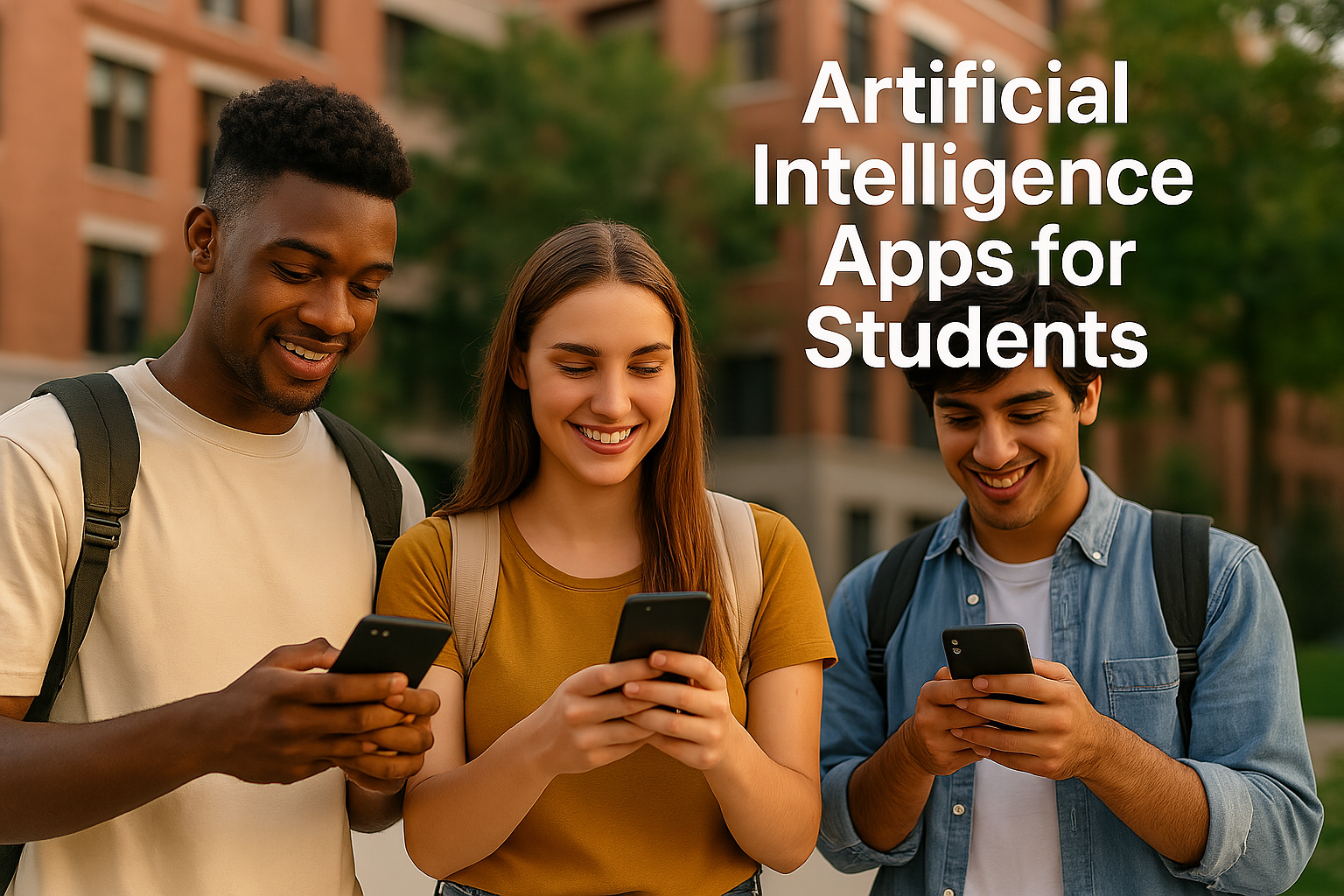Smart Study: What to Look for When Choosing Artificial Intelligence Apps for Students

Strong 8k brings an ultra-HD IPTV experience to your living room and your pocket.
In today's tech-driven education landscape, students are turning to artificial intelligence (AI) apps more than ever before. From AI-powered tutoring to automated time management, these apps are transforming how students learn, engage, and grow academically. But with the rising number of AI education apps available, the real challenge lies in choosing the right one. Not all apps are created equal, and selecting the right solution can significantly impact a student’s academic performance and overall learning experience.
So, what exactly should students and parents consider before choosing an AI-powered education app? This guide will walk you through the essential features, benefits, and considerations to keep in mind for making the smartest decision.
Why Are AI Apps Important for Students?
Artificial intelligence apps are reshaping education in several impactful ways:
- Personalized Learning: AI can analyze individual learning styles, pace, and strengths to tailor content accordingly.
- 24/7 Availability: Unlike human tutors, AI apps are available round the clock to support learning anytime, anywhere.
- Automated Feedback: Instant feedback on quizzes, assignments, and tests helps students identify mistakes and improve rapidly.
- Efficient Time Management: Many apps help organize study schedules and set reminders based on upcoming deadlines or topics.
- Inclusive Learning: AI enables adaptive learning environments for students with special needs, language barriers, or learning difficulties.
With these benefits in mind, it becomes crucial to carefully assess your options.
Key Factors to Consider When Choosing an AI App for Students
1. Personalization Capabilities
The best AI learning apps offer adaptive learning paths. These apps understand the user’s learning behavior and adjust content difficulty and style accordingly. Look for features like:
- Skill level assessments
- Adaptive quiz difficulty
- Suggested content based on past performance
Example: An AI math tutor that gets harder as the student improves is more effective than a one-size-fits-all app.
2. Subject Coverage and Curriculum Alignment
An ideal AI app should align with the student’s school curriculum or academic goals. Some apps focus solely on STEM subjects, while others offer a broader range including languages, social sciences, and more.
Tip: Check if the app allows users to choose curriculum standards (e.g., CBSE, IB, or Common Core).
3. User Interface and Experience (UI/UX)
No matter how powerful the AI behind an app is, if the interface is confusing or cluttered, students won’t use it. A good AI education app should have:
- A clean, intuitive interface
- Easy navigation
- Child-friendly or age-appropriate design
Pro tip: Look for trial versions or free demos to test the interface before subscribing.
4. Feedback and Reporting
The app should offer clear feedback on student progress and areas for improvement. For parents and teachers, reports that show growth, time spent, and weak areas are invaluable.
Features to look for:
- Progress charts
- Performance reports
- Weekly or monthly summaries
5. Gamification Elements
Learning doesn’t have to be boring. Gamified features like badges, leaderboards, and rewards can significantly enhance motivation and engagement.
But caution: Make sure gamification supports learning outcomes, not just app usage.
6. Security and Privacy
Many AI apps collect and store personal data. Ensure that the app complies with standard security protocols such as:
- GDPR or COPPA compliance
- Data encryption
- Transparent privacy policies
This is especially important for younger users.
7. Offline Access and Device Compatibility
Not every student has constant access to the internet or high-end devices. The ideal AI app should offer:
- Offline access or downloadable content
- Compatibility with Android, iOS, Windows, and even low-spec devices
8. Multilingual and Accessibility Support
Students from diverse backgrounds benefit from apps that support multiple languages or accessibility features like:
- Text-to-speech
- Language translation
- Dyslexia-friendly fonts or contrast settings
This ensures inclusivity in learning.
9. Integration with Other Tools
Some AI apps offer integrations with classroom platforms like Google Classroom or Microsoft Teams. This makes it easier for students to transition between school and self-learning.
Also, the ability to export notes or sync calendars is a bonus.
10. Pricing and Subscription Models
While many apps offer free versions, premium features are usually locked behind a paywall. Compare plans and check what’s included:
- Are there family plans or student discounts?
- Is it a one-time purchase or a recurring subscription?
- Are there hidden in-app purchases?
A good AI app should be affordable and transparent.
Top Use Cases of AI Apps in Education
Here are a few real-world scenarios where AI apps prove invaluable:
- Homework Assistance: AI apps like Socratic or Brainly scan problems and provide step-by-step solutions.
- Language Learning: Duolingo uses machine learning to adapt lessons based on user proficiency.
- Time Management: Apps like myHomework Student Planner or Notion use AI to schedule study routines and optimize productivity.
- Test Prep: Platforms like Quizlet leverage AI to design customized flashcards and practice tests.
Common Pitfalls to Avoid
When choosing an AI education app, avoid these mistakes:
- Ignoring Reviews: User feedback often reveals long-term issues or hidden costs.
- Overlooking Data Privacy: Ensure the app doesn't misuse student data.
- Relying Solely on Free Features: Free plans may have limited educational value.
- Not Testing the App First: Always use trial periods to evaluate before paying.
How Parents and Educators Can Help
Parents and teachers should play a proactive role by:
- Helping younger students set up and monitor usage
- Discussing learning goals regularly
- Encouraging balance between screen time and offline study
- Reviewing performance reports together
These practices ensure students make the most out of their AI-powered learning tools.
The Future of AI in Student Learning
AI in education is only getting started. Future advancements may include:
- Emotionally intelligent AI tutors that respond to stress or boredom
- VR + AI combinations for immersive learning
- AI-generated personalized textbooks
- Real-time translation for global classrooms
As AI becomes more intuitive and integrated, students will enjoy even more personalized, efficient, and engaging learning experiences.
Conclusion
Artificial intelligence apps are no longer a luxury in education—they're becoming a necessity. However, the real power lies in selecting the right one that fits a student’s specific needs, learning style, and academic goals. From personalized learning and curriculum alignment to privacy and accessibility, each factor plays a vital role in the decision-making process.
Whether you're a student, parent, or educator, taking time to evaluate these features can lead to smarter learning choices and better outcomes.
If you're an edtech startup or institution looking to create your own customized AI learning platform, partnering with a reliable artificial intelligence app development company is the best way to ensure your solution meets modern educational standards.
Note: IndiBlogHub features both user-submitted and editorial content. We do not verify third-party contributions. Read our Disclaimer and Privacy Policyfor details.







